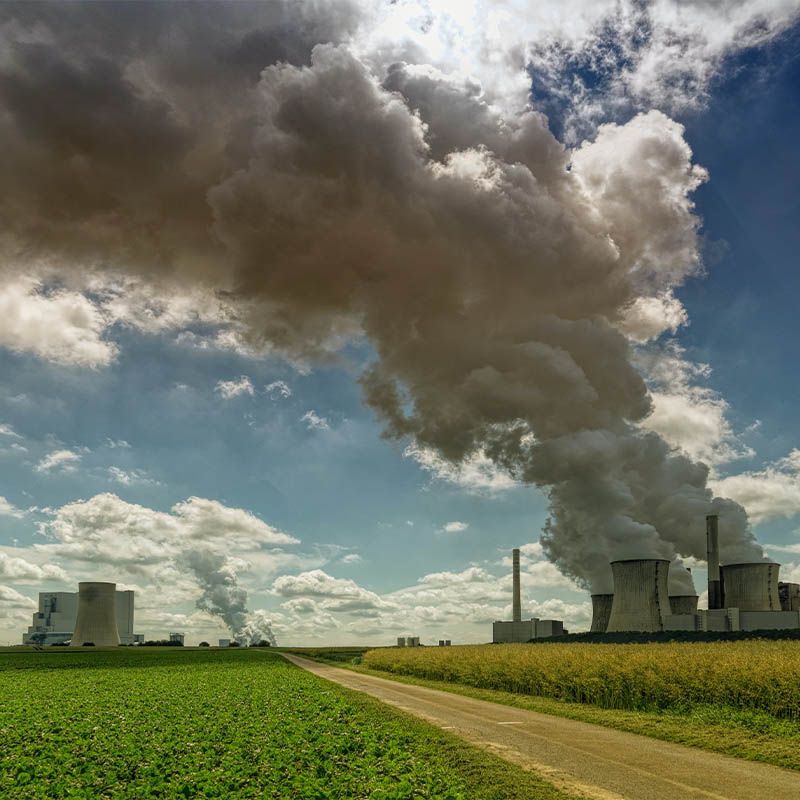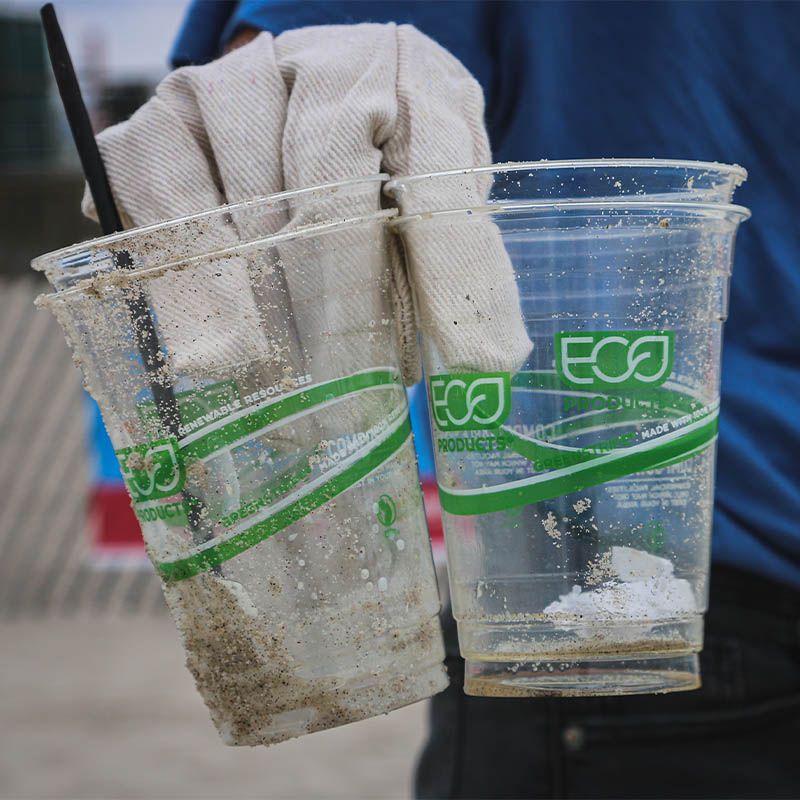The reality behind corporate greenwashing
Together, we'll delve into the phenomenon of greenwashing to explore its origins, common tactics and the concrete manifestation of this practice. We'll also look at the impact it can have on consumers and the environment.
The origins of greenwashing:
This word-valise is made up of green and whitewashing, a term often used to refer to the attitude of politicians who are rebuilding their legitimacy without damage.
The concept originated in the late 1980s and is attributed to a certain David Bellamy, an English botanist. The word immediately found its audience because it appeared at a particular time: the first significant rise in environmental concerns, marked by companies looking to capitalize on this new theme.
Indeed, with the first Earth Day taking place in 1990, and the Rio Summit for 1992 in the offing, companies were keen to exploit the "trend" and find themselves an environmental legitimacy with the public. However, this was far too quick a task, and the multinationals didn't prepare for it or really take it on board. It thus embodies the symbol of greenwashing, of selling oneself as "eco-friendly" without really taking into account the real concerns they engender.
Although the word was born in the 1990s, the concept was already commonplace in the 1960s in the USA during the Green Revolution, when pesticide producers claimed to be the benefactors of humanity...

Today, greenwashing is hugely present in our daily lives, so let's take a look together at how it really materializes.
Common greenwashing tactics:
Although greenwashing may sometimes be the result of a company's clumsiness (misunderstanding the issues and technical aspects), it is nevertheless often practiced knowingly.
The following is the panoply of any self-respecting greenwasher. The range of practices is wide, with several different techniques to choose from: diversion of attention, lack of transparency, false labels, and finally misleading packaging. A fine arsenal for misleading the consumer...
Let's start with the technique of diverting attention. Also known as the small-scale initiative, the principle is simple: divert attention from worrying large-scale business practices by communicating heavily on minor, isolated initiatives, which clearly don't measure up to the company's impact, thus creating an illusion of sustainability. Also in this category are partnerships with environmental organizations that enable the company's image to be associated with environmental values, even if the concrete actions are very limited.
This can include, for example, fast fashion or even ultra-fast fashion companies, which implement a so-called "eco-responsible" collection even though the vast majority of their collections use synthetic fibers derived from petroleum, or companies which claim to operate using renewable energies even though only a small part of their production is carried out using them, the rest remaining carried out using fossil fuels.
The technique of lack of transparency is also frequently used. It's a very easy way of greenwashing. It's enough for a company to communicate about the great commitments it has made in favor of ecology, while its actions don't match its rhetoric at all. For example, a bank might claim in its communications to be protecting an entire site by refusing to finance climate-change projects, when in reality it is only refusing financing for a tiny percentage of the site.
Greenwashing is also very often manifested through misleading packaging, which improperly "greens" product packaging. There are several possibilities: the use of vague terms and misleading designations such as "ecological", "green", "natural" without concrete evidence to back up these claims. They are therefore interpreted subjectively, leaving room for ambiguity. We can also talk about the color green, which we spontaneously associate with nature, ecology and the environment, or symbols and images of nature and wildlife that give the impression that the company is "ecological", even if the practices totally contradict this.
Finally, another technique is to use false labels or confusing labeling such as "eco-friendly", which therefore have no verifiable certifications and can therefore mislead consumers. The absence of clear standards in this respect can make claims difficult to verify. Another example is references to obsolete standards i.e. the use of references to obsolete and/or unrecognized environmental standards which can give the consumer the impression of compliance when they often do not reflect best practice. Some even amuse themselves with selective comparisons, i.e. they make advantageous comparisons with less environmentally friendly competitors, but they don't provide objective data or criteria to back up the claims made.
So, because of this multitude of techniques to deceive the average consumer, it's crucial for them to be informed but also critical of these tactics, with the aim of distinguishing genuine environmental commitments from the greenwashing strategies employed by multinationals and other organizations.
Greenwashing generates many harmful consequences:
As we've just seen, false or misleading statements and a lack of concrete evidence in the environmental claims put forward by greenwashers can mislead the unscrupulous consumer. The consequences of such deception go beyond the "mere" financial aspect. Indeed, it also affects the environment. Greenwashing alters judgment, so by giving their support to these environmentally unfriendly practices, consumers can by inadvertence have a strong environmental impact and contribute to major problems such as global warming or the overconsumption and overexploitation of resources. What's more, consumers' loss of trust in companies can engender distrust of companies genuinely committed to sustainability, genuinely investing in responsible practices.

Regulation and regulation around greenwashing:
Greenwashers can now be sanctioned. Indeed, the legal framework has evolved in this direction in recent years, thanks in particular to the law on the fight against waste and the circular economy (Loi AGEC) of 2020. Amending Article L.121-2 of the Consumer Code, which defines misleading commercial practice, the Climate and Resilience Act of 2021 has expanded the definition of misleading practice "by including (...) false or inaccurate allegations, indications or presentations likely to mislead the consumer on the environmental impact of the product or on the scope of the advertiser's environmental commitments".
Thus greenwashing is now assimilated to a misleading commercial practice and is therefore punishable by two years' imprisonment and a fine of 300,000 euros.
Since January 1, 2023, it has even beenbannedfor advertisers to claim in advertising that a product or service is carbon neutral (or other equivalent wording) without complying with a precise framework.
Failure to comply with these obligations could result in a fine of up to 20,000 euros for an individual, and up to 100,000 euros for a legal entity.
The Direction Générale de la Concurrence, de la Consommation et de la Répression des Fraudes (DGCCRF) also intervenes in this field. It has conducted a survey of 1,100 establishments covering the years 2021 and 2022 concerning the fairness of environmental claims used to promote non-food products.
Europe is also getting to grips with the subject, and is currently negotiating its "Green Claims" directive, which will provide a more precise framework for environmental claims and eco-labels.
Fighting greenwashing:
In a bid to counter the scourge that is greenwashing, many players have put in placeadvice for companies to avoid doing it, but also for consumers so they can recognize it.
One example is ARPP, l'Agence de Régulation Professionnelle de la Publicité, the private self-regulatory body for advertising in France. Without the power to impose legal sanctions, ARPP's role is to encourage healthy advertising on a basis of self-discipline, setting ethical rules and advertising standards. It often works hand in hand with ADEME(Agence de l'environnement et de la maîtrise en énergie or Agence de la Transition écologique) to prevent greenwashing and limit the abusive use of ecological arguments. In fact, ADEME has published its Guide Anti-greenwashing which is a "tool for raising awareness, helping to make decisions and creating in compliance with the rules of more responsible communication". This guide enables companies to carry out a self-assessment of their communications strategy.
We could also mention the Authorités de Régulation Professionnelle de la Publicité (ARPP). In some regions, these independent authorities ensure that advertisements are not misleading or deceptive, including when it comes to environmental claims. In 2020, ARPP even published its "Sustainable Development Recommendation" version 3 document. In force since August 2020, it induces a double responsibility for professionals. The aim is to "present the advertiser's significant actions or the properties of its products in terms of sustainable development" as well as to encourage them to "respect the principles of the UNDP (United Nations Development Organization) Sustainable Development Goals, which address the various dimensions of sustainable development: economic growth, social integration, environmental protection". (ARPP website)
Consumer Protection associations such as UFC-Que-Choisir, also strive to protect consumer interests by denouncing misleading practices.
Also in the fight against greenwashing, the Conseil National de la Consommation (CNC) has created several versions of a Guide pratique des allégations environnementales which provides an overview of the legal framework for combating greenwashing, as well as recommendations for the use of environmental claims by professionals.
ISO 14021 specifies the requirements for self-declared environmental claims (symbols, mentions, etc.). It also describes a general methodology for evaluating and verifying self-declared environmental claims.

In order to recognize greenwashing a few tricks exist. First of all, you can check the certifications and labelsplacarded on your products. They may be worthless. Analyze the terms used and watch out for vague terms, if they're not clearly defined or supported by tangible evidence they may come under the heading of greenwashing. Also beware of advertisements that make extensive use of images of nature without providing details. They can be misleading.
In conclusion, greenwashing represents aserious threat to consumer confidence but also to the environment. Misleading environmental claims and other techniques used can mislead the public and thereby contribute to practices that are detrimental to the planet. Consumer vigilance, combined with the many efforts of regulatory bodies is essential to combat this potentially unfair practice and encourage a genuine transition to more environmentally friendly business practices. By keeping themselves regularly informed and becoming critical on these subjects, consumers can play a particularly crucial role in promoting good practice and protecting the environment.
At L'Exception, we do our utmost to avoid greenwashing. We had our communications and CSR action plan audited by Bluequest to avoid falling into the trap of over-communicating the environmental specifications of our products.
In order to be the most transparent with you, we try (when information is available) to provide you with as much information about our products as possible. We have asked our brands to provide us with their CSR action plans. We also highlight products that meet our Eco x Ception criteria. Please note, we repeat that these criteria are not intended to say that a product is eco-responsible, if indeed a product can be said to be. They are, however, useful indicators to help you navigate through the site.
Also, in the interests of education, we feel it's essential to inform you about good consumer practices, on key topics such as fast-fashion or introduce you to brands that integrate eco-responsibility into their designs.





